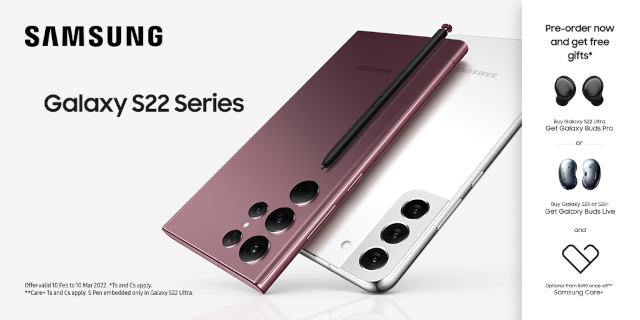Business News sponsored by the Samsung Galaxy S22 series:
We’ve come a long way since TVs were giant, heavy boxes that took up a quarter of the living room with a picture that was only clear when every curtain was drawn.
These days, sitting down to enjoy your favourite movie, sports match, or video game must come with the excitement that you’ll be experiencing the best picture quality possible, complete with deep colours, a wide range of contrast, and brightness levels that let you watch and play regardless of a room’s natural light.
That’s why we’re here; to share the technical know-how of today’s leading devices and help you decide for yourself which one is the best fit.
LCD vs LED?
A good place to start is knowing how TVs produce light and the most common way they do this. Though they may sound like two different kinds of TV, an LED TV is simply a specific kind of liquid crystal display (LCD). An LCD uses a crystal solution sandwiched between two panels, which lets light through or blocks it when an electrical current flows through the solution, creating the moving pictures and colours you see.
Older LCDs used cold cathode fluorescent lamps (CCFLs) to provide the light that passed through, but today’s TVs use light emitting diodes (LEDs) that are smaller and more energy efficient. If you see a modern LCD TV, nine out of 10 times, you can bet it’s using LED technology for its lighting.
NanoCell: Taking it to the atomic level
LG’s NanoCell technology was developed to bring the picture quality of today’s LED closer to the level of OLED – the ultimate in display quality, in our opinion. NanoCell TVs use nanoparticles that sit behind the display to filter out colour impurities and duller tones, producing purer and more vibrant colours on screen. These particles sit one nanometre (that’s 0.000001 millimetres!) apart from one another, making the image razor sharp – even when viewed from wider angles.
LG NanoCell TVs are available in 4K and 8K resolution, offering four and 16 times more than the number of pixels in a standard HD TV. They also feature Full-Array Local Dimming which, unlike conventional LCDs that are direct or edge-lit, offers more precise control over a display’s dimming zones. Parts that need to be bright stay bright, and those that need to be darker stay dark – regardless of adjacent areas on the screen.
Above and beyond LCD
LG’s QNED MiniLED TVs have taken LED TVs to a whole new level by combining the benefits of NanoCell filtering technology with Quantum Dot colour enhancement and mini-LED backlighting.
Where conventional LCD displays use hundreds of LEDs, QNED uses up to 30 000 in its backlight. And, because QNED MiniLED TVs can fit in more miniature LEDs, they produce brighter images at an unmatched 1 000 000:1 contrast ratio. Your typical LCD display has a contrast ratio of only 1 000:1. Like NanoCell TVs, they feature Full-Array Local Dimming with an astounding 2 500 dimming zones, delivering more precise backlighting with less backlight bleeding.
QNED MiniLED TVs are nothing short of an evolutionary leap forward in the world of displays. And, with sizes going up to 86 inches, the only thing that’s ‘mini’ about the displays are the LEDs.
The future is here with OLED
Remember when we mentioned TVs as big as crates? Well, the move towards ultra-thin displays, and even ones that can fold and be hidden away, is made possible thanks to OLED technology. The current pinnacle of display technology, OLED uses self-lit pixels that act as their own light source. OLED displays use no backlighting, which means they don't suffer from any backlight bleeding. Instead, each pixel turns on and off on an individual level, producing perfect blacks and a level of contrast beyond anything any other display is capable of. With a 100% colour fidelity certification, LG’s OLED TVs deliver on-screen colours that are as vibrant and accurate as the original image – perhaps, more so.
LG OLED TVs come equipped with features that make content look its absolute best, while ensuring it’s also comfortable to watch. The TV panels are certified as flicker-free and emit low levels of blue light to prevent glare and discomfort. Less strain on the eyes makes for longer viewing periods and less eye-strain – great news for gamers, movie-marathoners, and sports-lovers.
The OLED range features Dolby Vision, the next step in High Fidelity Range (HDR) that uses picture metadata and analysis to optimise what you’re seeing on the screen to maximise colour depth and contrast range. Couple this with Dolby Atmos, which adds a height dimension to surround sound and places individual sounds more precisely across your living room, and you get a truly immersive home cinema experience.
All this works together to complete a display that offers the best picture, best colour accuracy, best bright and dark performance, and the best view, from any angle.






